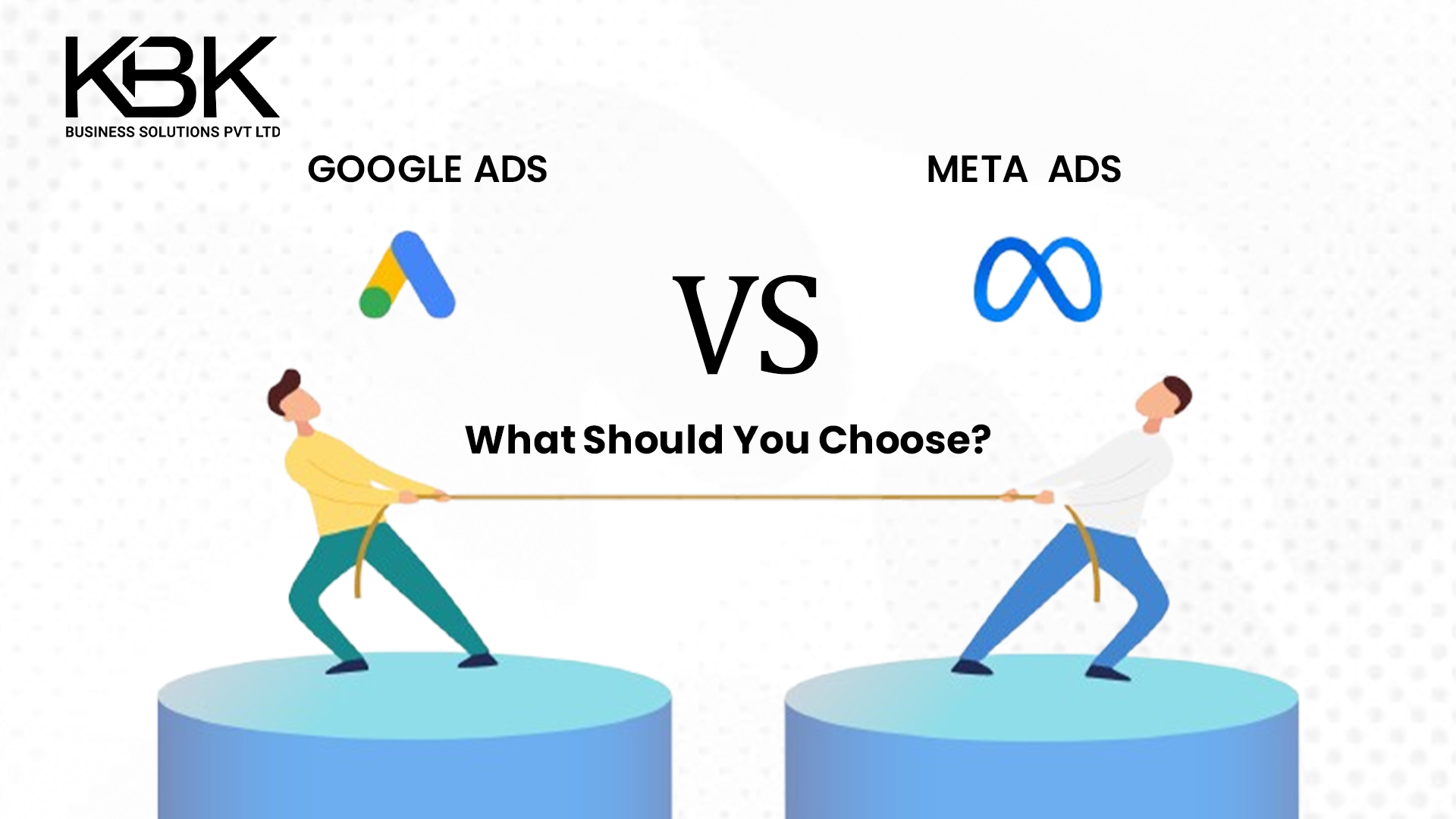Are you confused about where to invest your ad budget—Google Ads vs Meta Ads? You’re not alone. Many businesses wonder which platform gives better results, especially when it comes to reaching the right audience and getting a good return on investment.
Let’s simplify it for you and help you understand what each platform offers, and most importantly, which one might suit your business goals best.
What is Google Ads?
Google Ads is an online advertising platform by Google that lets businesses show ads on Google Search, YouTube, Gmail, and across millions of websites through its Display Network. It works mainly on a pay-per-click (PPC) model, meaning you only pay when someone clicks on your ad.
The biggest strength of Google Ads is that it targets users who are actively searching for something. For example, if someone types “buy running shoes online” into Google, and you sell shoes, your ad can appear right there.
Advantages of Google Ads:
- Reaches people with clear buying intent
- Great for generating quick leads and website traffic
- Offers detailed targeting with keywords and location
- Perfect for search-focused campaigns and direct response
What are Meta Ads?
Meta Ads refer to the advertising platform across Meta’s properties—Facebook, Instagram, Messenger, and more. Instead of targeting people based on what they search, Meta Ads show your content to users based on their interests, behaviors, and demographics.
These ads appear while people are scrolling through their feed, watching stories, or exploring reels. So, even if users aren’t actively searching for your product, Meta Ads can spark their interest through engaging visuals and messages.
Advantages of Meta Ads:
- Great for creating brand awareness and engagement
- Visually appealing ad formats (images, videos, stories)
- Advanced audience targeting based on age, gender, interests
- Ideal for lifestyle, fashion, e-commerce, and local businesses
What’s the Main Difference Between Google Ads and Meta Ads?
The difference between Google Ads and Meta Ads lies in how they target users and where the ads appear.
Google Ads:
Platform: Ads appear on Google Search, YouTube, and across the Google Display Network.
Targeting Method: Based on keywords and user search intent.
Goal: To reach users who are actively searching for a product, service, or solution.
Ad Formats: Includes text ads, display banners, video ads, shopping ads, and Performance Max campaigns.
Meta Ads (Facebook & Instagram Ads):
Platform: Ads appear on Facebook, Instagram, and Messenger.
Targeting Method: Based on user interests, behaviors, demographics, and custom audiences.
Goal: To build brand awareness, engage audiences, and reach potential customers even if they’re not actively searching.
Ad Formats: Includes image ads, video ads, carousel ads, story ads, and reel ads.
If your goal is to capture users who are actively searching for a product or service, Google Ads is ideal. But if you’re looking to build awareness or promote visual content, Meta Ads might be a better fit.
Which One Should You Choose?
It really depends on your business goals. If you want quick results from people who are searching for your service or product, Google Ads is a great choice. But if you want to build awareness, connect emotionally through visuals, and grow your audience over time, Meta Ads is very effective.
In many cases, combining both platforms can give you the best results—Google Ads to convert and Meta Ads to attract and engage.
Conclusion
Both Google Ads and Meta Ads are great tools—but they work in different ways.
If you want to reach people who are already searching for something you offer, Google Ads is a smart choice. If you want to show your brand to people based on their interests and build awareness, Meta Ads is a great option.
There’s no one-size-fits-all answer. The best way to know what works is to try, test, and see what gives you better results.






